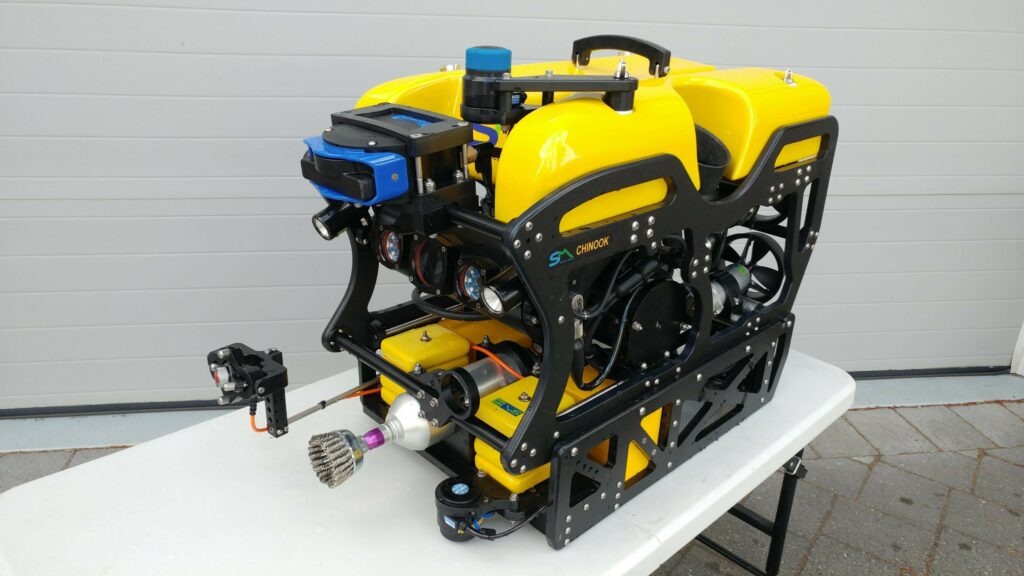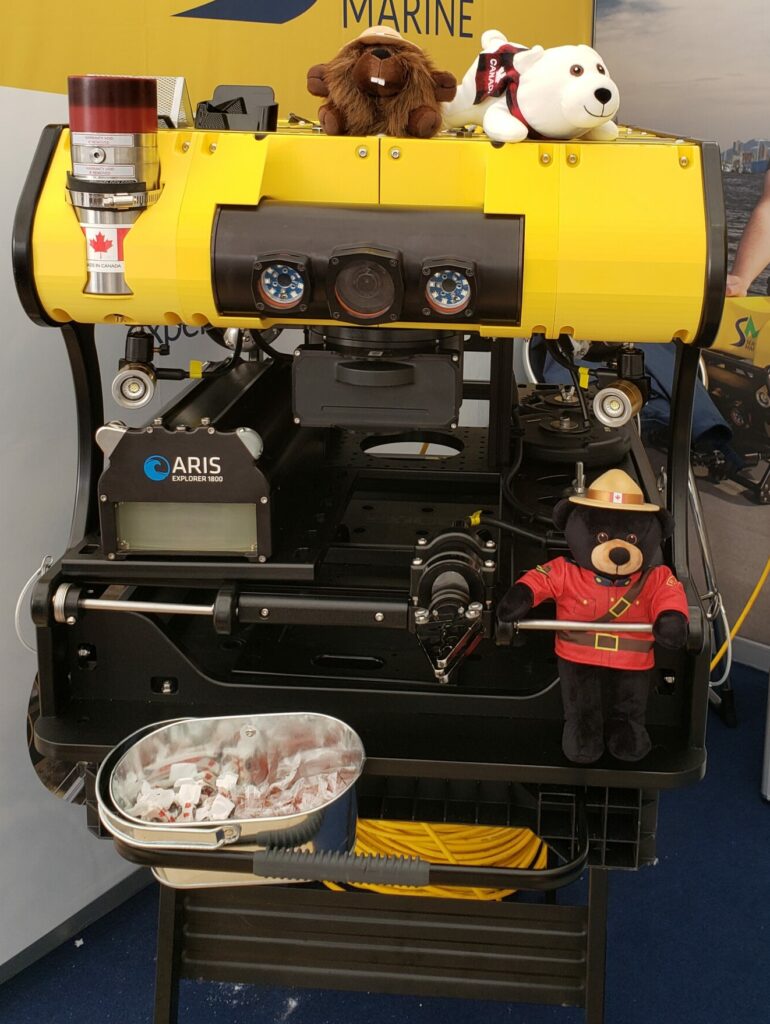There are different types of sonars and their use depends on the specific ROV missions you go on. In this post we will focus on multifrequency and programmable sonars. In the ROV industry, sonar plays a crucial role in helping ROV operators navigate, locate objects, and gather information in underwater environments. To catch up on the basics of how sonars work, you can read this post.
What is a multifrequency sonar?
A multifrequency sonar is a type of sonar system that can operate at multiple frequencies simultaneously or sequentially. In traditional single-frequency sonar systems, a single frequency of sound waves is used to create images or gather data about underwater objects and environments. In contrast, multifrequency sonar systems offer the ability to use different frequencies for specific purposes, resulting in enhanced capabilities and better performance in various underwater scenarios.
What is a programmable sonar?
A programmable sonar refers to a sonar system that can be configured and customized by the user to suit specific requirements and applications. Programmability can encompass various aspects of the sonar’s functionality. This adaptability and customization make programmable sonars valuable tools for a wide range of underwater exploration, research, and industrial applications.

The key benefits of multifrequency sonar
- Improved Resolution and Penetration. Different frequencies of sound waves interact with the water and objects in distinct ways. Higher frequencies generally provide better resolution, allowing the capture of finer details. In contrast, lower frequencies can penetrate deeper into the water or seafloor. By using multiple frequencies, a multifrequency sonar can offer both high-resolution imaging and deep penetration capabilities.
- Adaptability to Water Conditions. Water conditions, such as clarity, salinity, and temperature, can affect how sound waves propagate and interact underwater. Having the ability to switch between frequencies enables the sonar system to adapt to varying conditions, ensuring reliable performance in different environments. Understandably, this can be very handy.
- Target Discrimination. Different types of underwater objects, such as small fish, large structures, or the seafloor, may respond differently to specific frequencies. Multifrequency sonar systems can help discriminate between different types of targets based on their frequency-dependent responses.
- Enhanced Data Collection. By using multiple frequencies, a multifrequency sonar can provide a more comprehensive and accurate dataset, enabling more detailed analysis and interpretation of the underwater environment.
The key benefits of programmable sonars
- Frequency Selection. A programmable sonar can allow users to choose and switch between different operating frequencies based on their needs and the conditions of the underwater environment. Although, this is something for the more experienced ROV pilots out there. After all, the more aspects you can control, the more training and know-how you need.
- Beam Patterns. Users might be able to adjust the sonar’s beam patterns (the way sound waves are emitted and received) to optimize coverage and resolution for specific tasks.
- Data Processing. Programmable sonars may offer customizable data processing options, allowing users to apply filters, enhancements, or specific algorithms to the collected sonar data.
- Output Formats. You might be able to choose different output formats for the sonar data. choices range from raw data, processed images, or 3D models. This is usually based on their intended use.
- Integration with ROVs. Programmable sonars can be integrated allowing users to control the sonar’s settings and functions remotely.
Choosing between different types of sonar
At SEAMOR we recommend the following options. This is not a complete list of all the sonars out there but these do easily match up with our ROVs. Budget, use, and quality of sonar are the main considerations. Sonars are not the accessory with which you cut corners.
- Imagenex 852 Sonar. Great fit for smaller ROVs.
- Imagenex 881A Sonar. This is a programmable multi-frequency digital imaging sonar. You can operate it using default frequency settings or customize the configurations for your own situation.
- 965A Sonar Blueview M900. The most compact, full featured 2D Multibeam Imaging Sonar available
- Soundmetrics Aris 3000. All models offer dual frequencies, dynamic focusing, multiple recording and output options, background subtraction and innovative software.
- Tritech. They offer a large variety of sonars for ROVs and some SEAMOR ROVs have been paired up with them. So far, we’ve only had great reviews.
- Blueprint Oculus. Offers a wide variety of both high, low and Multi-Frequency imaging sonar.
- Kongsberg Flexview. Provides a high-quality distortion-free images over a 140° sector, reducing the time it takes to search for and locate targets. Two versions of the Flexview are available.
Reach out for a chat to get the full specs on which sonar and which ROV would be best for you.

